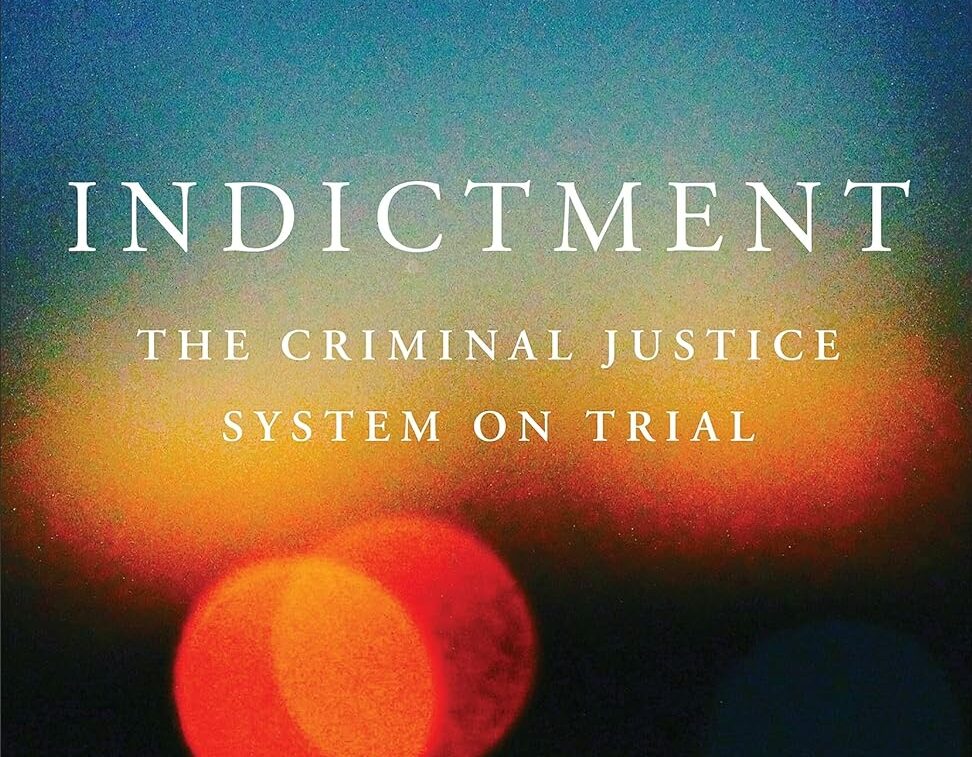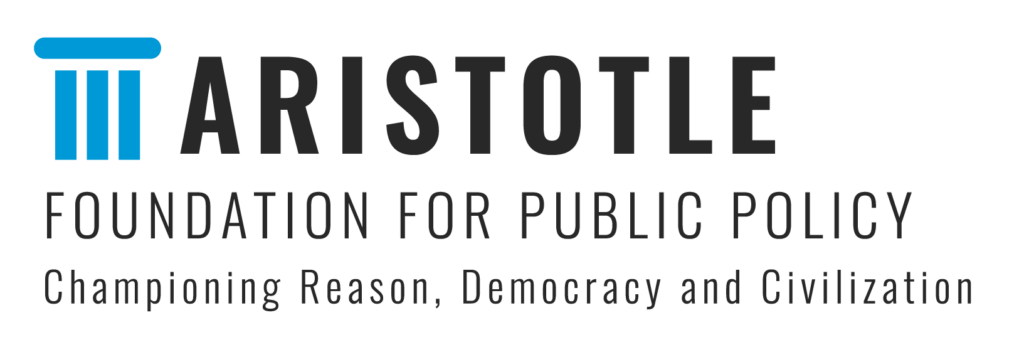
Adam Zivo, Western Standard, February 24, 2024
Late last year, University of British Columbia law professor Benjamin Perrin published a book — Indictment: The Criminal Justice System on Trial — arguing that “tough on crime” policies do not work and that Canada’s criminal justice system needs a complete overhaul.
Perrin’s views have garnered considerable attention, given that from 2012 to 2013 he was Prime Minister Stephen Harper’s senior legal advisor and in that capacity, advocated for many of the policies he now repudiates.
Everyone loves a good apostate, but are Perrin’s arguments persuasive? After reading his book, it seems that the answer is no. In lieu of intellectual rigour, Perrin’s assertions come across as unfocussed, superficial, and inconsistent.
The first half of Perrin’s book figuratively puts Canada’s criminal justice system “on trial” with a list of progressive critiques. In just 200 pages, Perrin breezes through topics such as systemic racism, Indigenous law, addiction policy, inhumane prison conditions and the relationship between trauma and crime.
Some of the critiques he raises are fair. Perrin rightfully points out, for example, that indigenous peoples have maintained their own systems of justice that have received inadequate recognition and support despite having a firm constitutional grounding.
Yet Perrin fails to give that or other observations the attention that they deserve. Each chapter of his book attempts to tackle a complex social issue in only 20 to 25 pages and, as a result, his analysis is cursory at best. While many writers can pack a great deal of information into only 20 pages, Perrin’ s chapters fall short. He pads them with long anecdotes that take up so much space that not much remains when you look beyond them. This practice is surprising, given that, in public debates about addiction policy, Perrin has vehemently dismissed the validity of anecdotal evidence when it contradicts his views.
The author also over-relies on quotes from ideologically-aligned civil society actors to make his points. While such quotes can be useful when used judiciously, Perrin often treats them as a substitute for evidence. However, criticisms of the justice system, and broad claims about the nature of Canadian society, are not true just because a group of activists say so.
Indigenous policy: Damned if you do and….
Because Perrin rarely acknowledges, let alone addresses, obvious counter-objections to his arguments, his book is rife with oversimplifications and false morality clarity where there ought to be nuance. He also has a bad habit of being inconsistent, especially with respect to indigenous issues.
For example, he condemns European colonists for introducing alcohol to indigenous communities and notes that many such communities tried to ban the substance within their borders. Then, only a few sentences later, he criticizes these same colonists for criminalizing indigenous people who drank — but how else were they supposed to reduce consumption if not by prohibition? By asking nicely? By providing comprehensive, trauma-informed therapy in the 19th century?
As Perrin tackles so many disparate topics, and seldom provides novel information, the first half of his book can feel like an extended Wikipedia article that simply itemizes fashionable ideas on justice reform. This would not have been a problem had Perrin framed his work as an introductory explainer, but he instead claims he is providing definitive and comprehensive evidence of a broken system. The chasm between his ambitions and actual writing is vast.
The book’s flaws become more apparent in the second half, wherein he outlines a new system based on “restorative justice” — a term that is defined by the federal government as “an approach to justice that seeks to repair harm by providing an opportunity for those harmed and those who take responsibility for the harm to communicate about and address their needs in the aftermath of a crime.”
Many of Perrin’s proposals here are radical. For example, he argues that Canada should abolish traditional prisons and replace them with “community-based alternatives to incarceration that would support rehabilitation and healing,” and that police should be largely replaced with “crisis teams” trained in mental health and de-escalation. He also believes that drugs should be decriminalized and that the government should provide a free “safe supply” of addictive substances to replace illicit street drugs.
But, as with the first half of his book, his arguments here are often poorly substantiated.
For example, while Perrin devotes an entire chapter towards advocating for drug decriminalization, he fails to cite any actual studies or data and instead relies exclusively on activist quotes (even though a rich and contested body of research clearly exists). Regardless of whether one supports or opposes decriminalization, to treat the subject so unseriously is a major failure of analysis, especially when dealing with a matter as critical as drug addiction.
The book’s arguments on restorative justice are similarly sloppy. Perrin believes that crime should be understood as an interpersonal harm (rather than an offence against the state) and that victims should have much more control over how these harms are repaired, which includes determining how offenders are held responsible for their behaviour. In response to concerns about feasibility, Perrin points out that restorative justice is already practiced all over the world, particularly within faith-based communities, so why not expand it?
What he neglects to mention is that restorative justice practices are often concentrated in small communities where citizens are bound together by close social ties. As restorative justice requires a great deal of trust and emotional investment, this makes sense — but it would be irresponsible to assume that a system can be generalized to the whole of Canada just because it works in some very specific contexts.
The onus is on Perrin to explain how restorative justice might work in complex, multiracial settings where victims and offenders are often strangers to one another — but he fails to meet that challenge. This, in turn, leads to other conspicuous gaps in his analysis.
There are many good reasons why a crime victim should not have control over how an offender is punished. For example, some victims may decide to punish minority offenders (or vice-versa) more harshly due to prejudices. Restorative justice systems could also expose crime victims to pressure and intimidation from an offender’s family and associates if it is believed that this could result in a lighter punishment. One could reasonably assume that this would be an important issue when prosecuting gang-related crimes.
Not learning from history or other countries
Perrin might have excellent counter-objections to these points which could lead to a more nuanced and complete debate, but his book’s readers will never know because he pretends that the case for justice reform is clear-cut when it quite clearly is not.
Indictment even feels surreal at times because while Perrin describes his reforms as if they belong to a utopic future, many of them have already been implemented in Canada, to some degree, with disastrous results.
Decarceration (the belief that imprisonment of criminals should be kept to a minimum) and drug decriminalization stand out as obvious examples. In 2019, Canada greatly loosened the country’s bail system and mandated that arrested individuals be released back into the public as soon as possible. As a result, violent repeat offenders have been able to repeatedly prey upon communities with near-impunity, as they are simply let back onto the streets when apprehended. For example, last July in Toronto a teenage boy was fatally stabbed in an unprovoked attack by 22-year-old Jordan O’Brien-Tobin, who was on probation at the time and had previously been charged with multiple violent assaults.
The problem became so serious that in January 2023, all of Canada’s premiers signed a letter urging the federal government to immediately strengthen the country’s bail system — later that year, the federal government acquiesced.
Similarly, after BC launched its drug decriminalization experiment in 2023, crime and public disorder exploded and, not only did overdoses calls increase by 25% compared to the previous year, a record 2,511 people died due to illicit drugs. Faced with a withering public backlash, the provincial government tried re-criminalize public drug use just eight months later only to be thwarted by judicial shenanigans.
To be fair, Perrin would not have been able to factor in all these developments as it typically takes a year for a finished manuscript to hit the market, which suggests that he wrote his book before things truly went south in Canada. But there was already evidence from other jurisdictions, such as San Francisco and Oregon, that such policies are less successful than Perrin makes them out to be.
Although some of Perrin’s more radical ideas have already been discredited, his book also calls for reforms that are rather milquetoast and obviously supported by a wealth of evidence — for example: investing more money into addressing the root causes of crime (i.e. housing, education, and employment.)
Few people would disagree with these broad proposals, but one would need to provide more specific details, especially with respect to implementation, to add value to the conversation. As Perrin avoids this, his advocacy, at least on these matters, is about as useful as declaring “war is bad.”
With any radical policy reform, one of the main questions people ask is, “How much will all of this cost?” Out of the 400 pages in Perrin’s book, only two are dedicated to this question. While he makes no significant attempt to budget his reforms, he assures us that he has a “high level of confidence” that his new system will be less expensive than the status quo because there are already a few pilot projects that are highly-cost effective, and surely these savings would scale up, right?
But not only do his proposed reforms go far beyond the ambitions of these pilot projects, any policymaker can tell you that it is incredibly difficult to estimate the costs of scaling up. You cannot simply assume that costs will increase linearly — you need to, once again, actually provide evidence to back up your prediction.
But ultimately, hard evidence does not seem to be a major concern for Perrin. Instead, he offers up hollow assertions, activist quotes and fluffy stories. If self-described criminal justice reform advocates want to put Canada “on trial” and enact systemic change — in addition to all the radical experiments already done on and to Canadians over the past few decades — they should start by revisiting their already-failed policies and empirically examining them. Absent that, they should not assume the jury pool will be credulous.
Adam Zivo is a Senior Fellow with the Aristotle Foundation for Public Policy.
Like our work? Think more Canadians should see the facts? Please consider making a donation to the Aristotle Foundation.

The logo and text are signs that each alone and in combination are being used as unregistered trademarks owned by the Aristotle Foundation. All rights reserved.
SUBSCRIBE TO OUR NEWSLETTER
SUBSCRIBE TO OUR NEWSLETTER

are signs that are each alone and in combination are being used as unregistered trademarks owned by the Aristotle Foundation. All rights reserved.
SUBSCRIBE TO OUR NEWSLETTER

SUBSCRIBE TO OUR NEWSLETTER
